Introduction
In the rapidly evolving world of e-commerce, launching a successful online retail store requires a well-thought-out strategy and meticulous planning. This article delves into the essential steps to build a thriving e-commerce business, starting with identifying a profitable niche and understanding the target audience. It outlines the importance of selecting the right product line and conducting comprehensive market research to validate business ideas.
The creation of a detailed business plan, securing proper business registration, and choosing the most suitable e-commerce platform are also discussed. Furthermore, the article emphasizes the significance of robust payment processing systems, efficient logistics, and a dynamic marketing strategy. Finally, it highlights the necessity of continual optimization post-launch to ensure sustained growth and competitiveness in the ever-expanding digital marketplace.
Step 1: Define Your Niche and Target Audience
Identifying a specific niche is the cornerstone of a successful online retail store. Start by examining your interests and expertise, and then align them with market demand. Tools like Google Trends and social media platforms can help you gauge popularity and identify trends. According to Nishank Khanna, VP of Growth at Utility NYC, targeting profitable niches such as SaaS software for legal and medical professionals can be highly lucrative due to their willingness to invest in solutions that streamline their workflows. Once you have selected a niche, define your target audience by analyzing demographics, preferences, and buying behaviors. This understanding allows you to tailor your marketing strategies and product offerings effectively.
Market research is indispensable for reducing risks and gaining insights into your potential customer base. As mentioned, “Collect demographic data to enhance comprehension of opportunities and constraints for acquiring customers.” This encompasses assessing demand, size of the industry, economic indicators, and location factors. For example, in the vending machine business, low overhead costs and the ability to operate continuously make it an attractive option. Similarly, understanding local market potential is crucial for car detailing services, where factors like climate and car culture play a significant role.
Customer centricity remains key, achieved through analytics, agile processes, and a test-and-learn culture. The rapid growth of eCommerce, fueled by the capability to reach customers worldwide and provide innovative offerings, further highlights the significance of a clearly defined niche and target audience. By focusing on these elements, you can secure a competitive advantage and ensure the long-term success of your online retail venture.
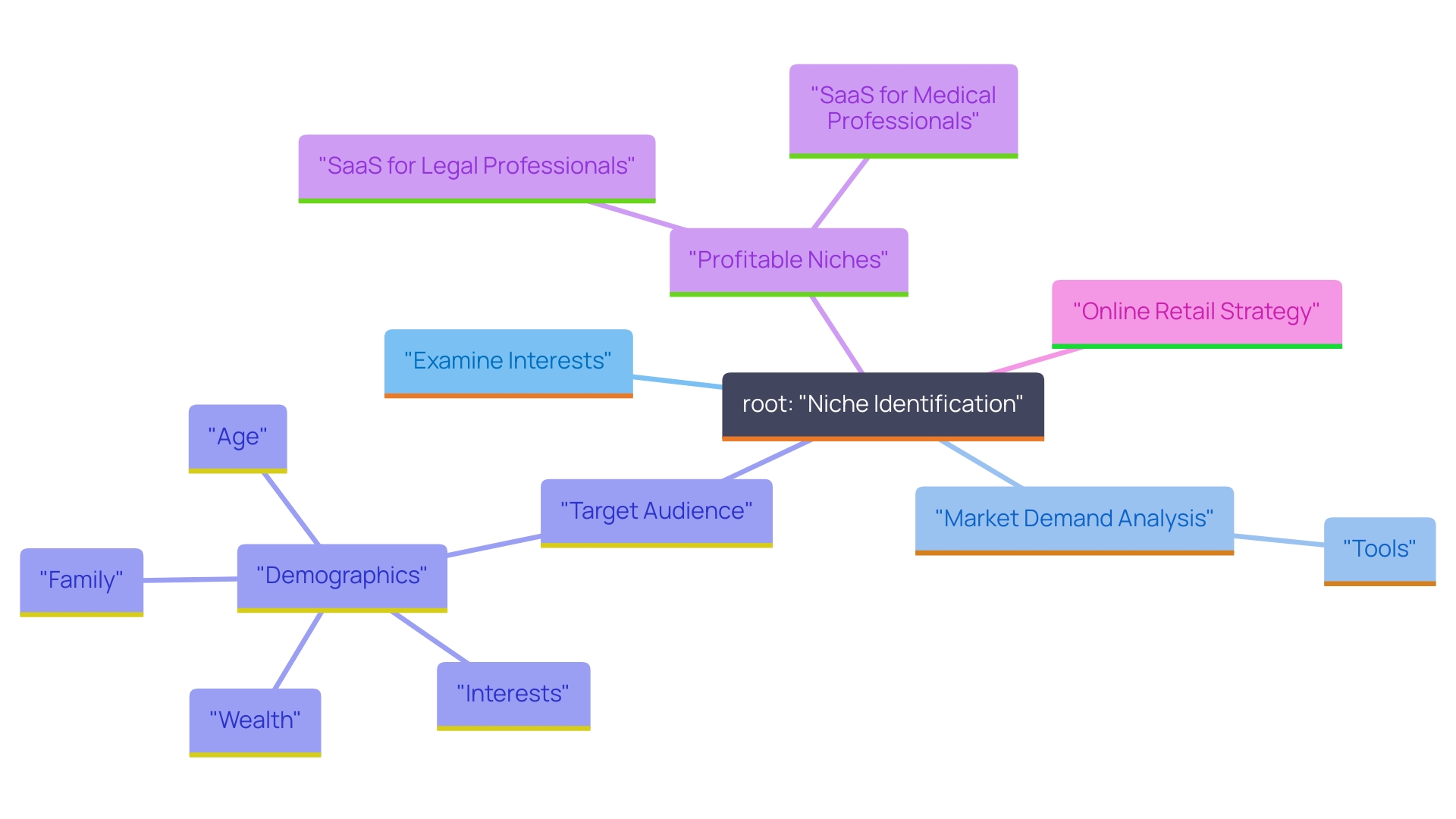
Step 2: Choose Your Product Line
Choosing the appropriate items for your online store entails aligning with your selected niche and connecting with your target audience. For instance, the baby goods market, expected to exceed $172 billion in the US by 2032, not only offers essential items but also caters to a perennial demand, making it a lucrative yet competitive niche.
When assessing possible items, consider profitability, sourcing options, and competition. Dropshipping, for instance, enables you to sell items without maintaining inventory, lowering expenses and lessening the risk of unsold stock. This model has gained momentum as it enables business owners to focus on sales and marketing, while outsourcing assembly, inventory management, and delivery.
Performing a SWOT analysis is essential to evaluate the strengths, weaknesses, opportunities, and threats associated with your choices. 'Employ tools such as basket analysis to recognize items often purchased together, as shown in case studies like the Power BI examination of the fictional pet supply business, Whiskique.'. This data-driven approach can guide item selection and marketing strategies, ensuring that you cater to your customers' needs effectively.
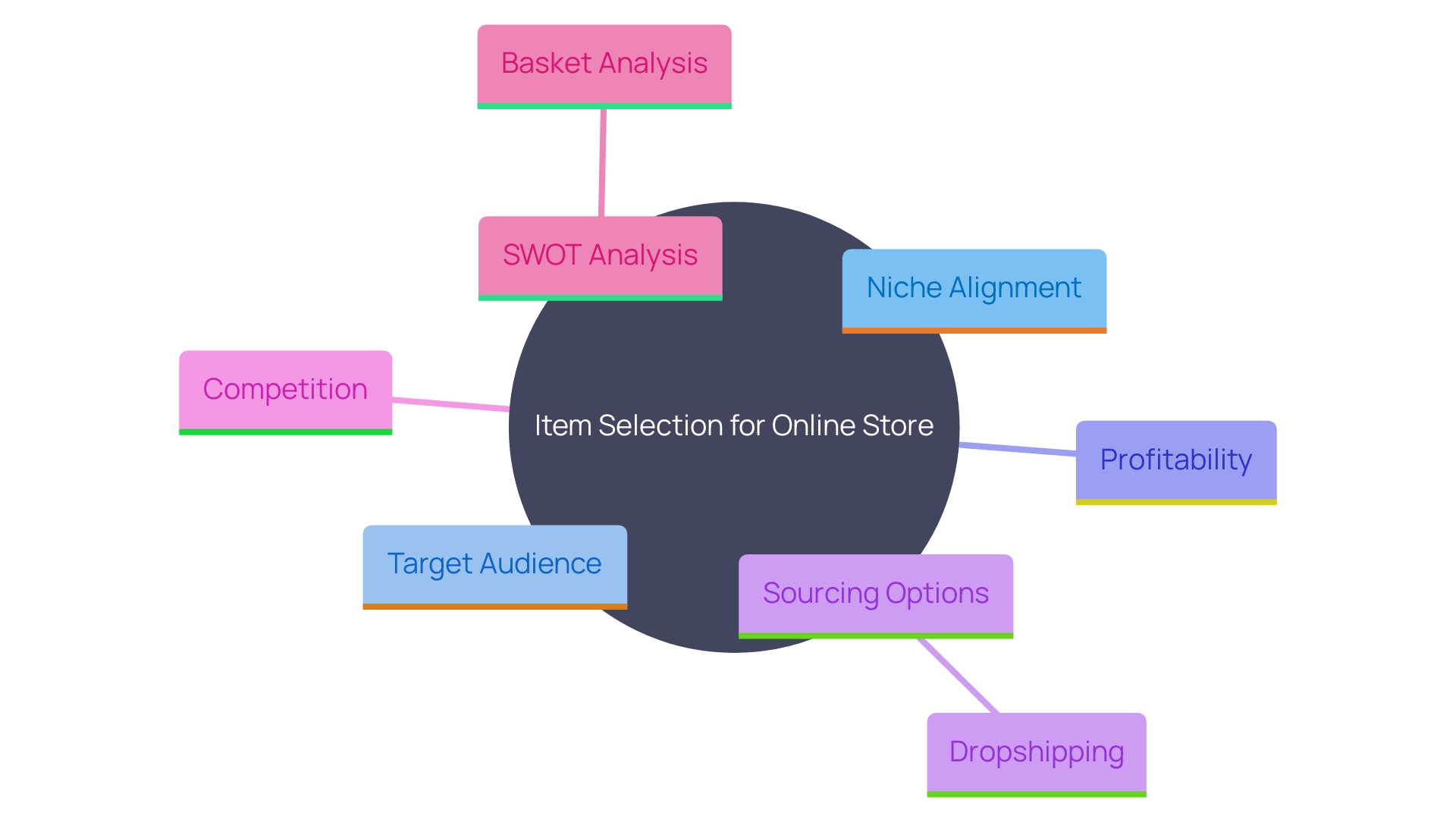
Step 3: Conduct Market Research and Validate Your Idea
Before launching, utilize data science to perform comprehensive research and validate your business idea. Utilize integrated eCommerce platforms to gather demographic information, analyze purchasing habits, and understand consumer personas. These insights can assist in refining your concepts to correspond with consumer needs. Collect feedback through online forums, social media polls, and focus groups to refine your offerings. This method not only aids in minimizing risks but also guarantees your products fulfill the changing demands of your audience, thus improving user experience and remaining competitive in the industry.
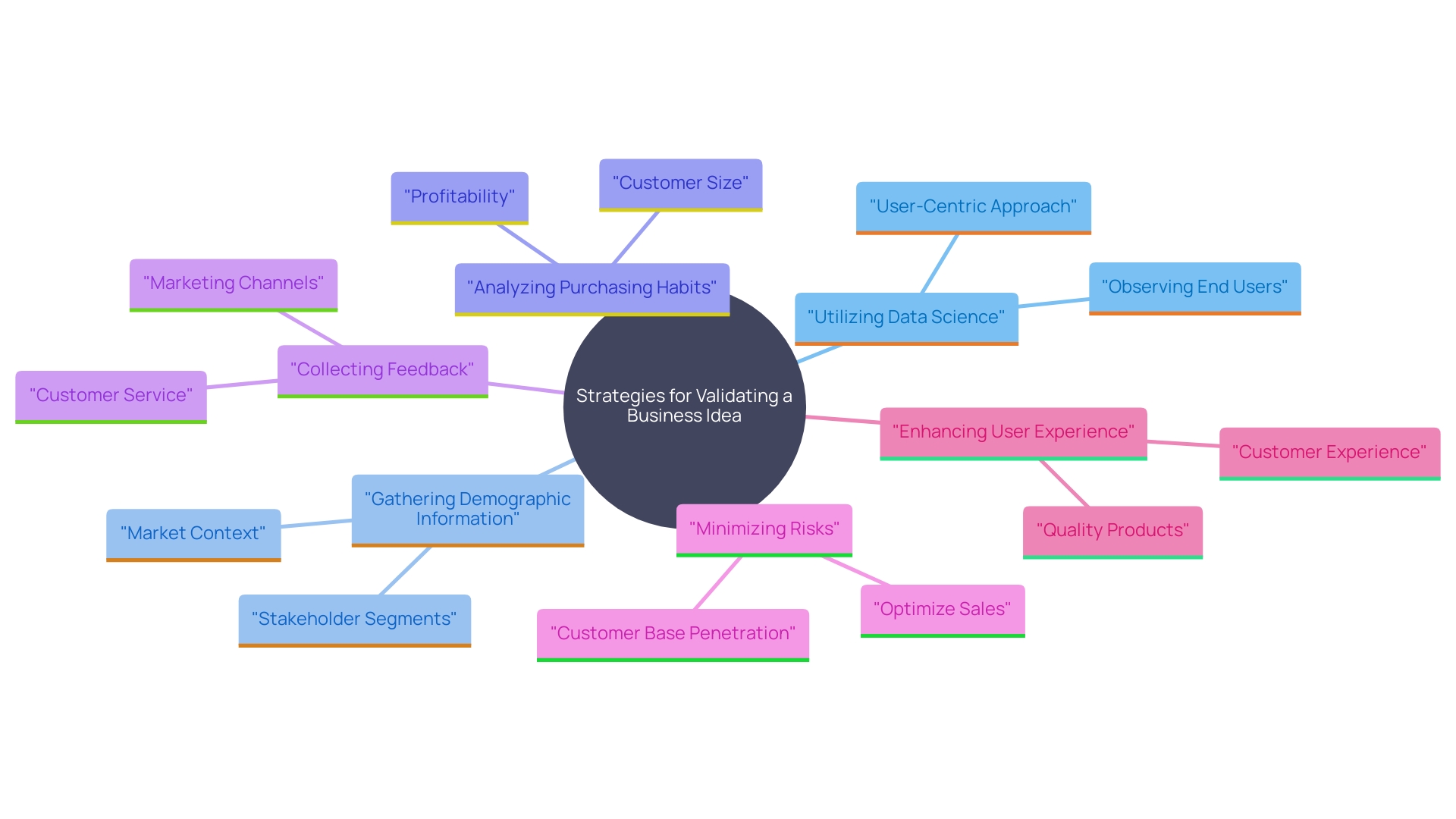
Step 4: Create a Business Plan
A comprehensive plan is crucial for defining your vision, goals, and strategies. It should include essential areas such as industry analysis, financial projections, marketing strategies, and operational plans. This document not only serves as a roadmap for your enterprise but is also instrumental in securing funding. As stated by the Small Enterprise Administration, small enterprises account for two-thirds of new employment in the USA, emphasizing the significance of careful planning to maneuver through the competitive landscape. Employing advanced technologies such as AI can greatly improve your planning process by automating routine tasks and offering deeper industry insights. As Andrii Holubenko observes, “AI elevates the trend for automation to a higher stage,” enabling small enterprises to distribute resources more effectively. Adaptability in your strategy is crucial to adjust to market changes and take advantage of new opportunities, ensuring continued growth and success.
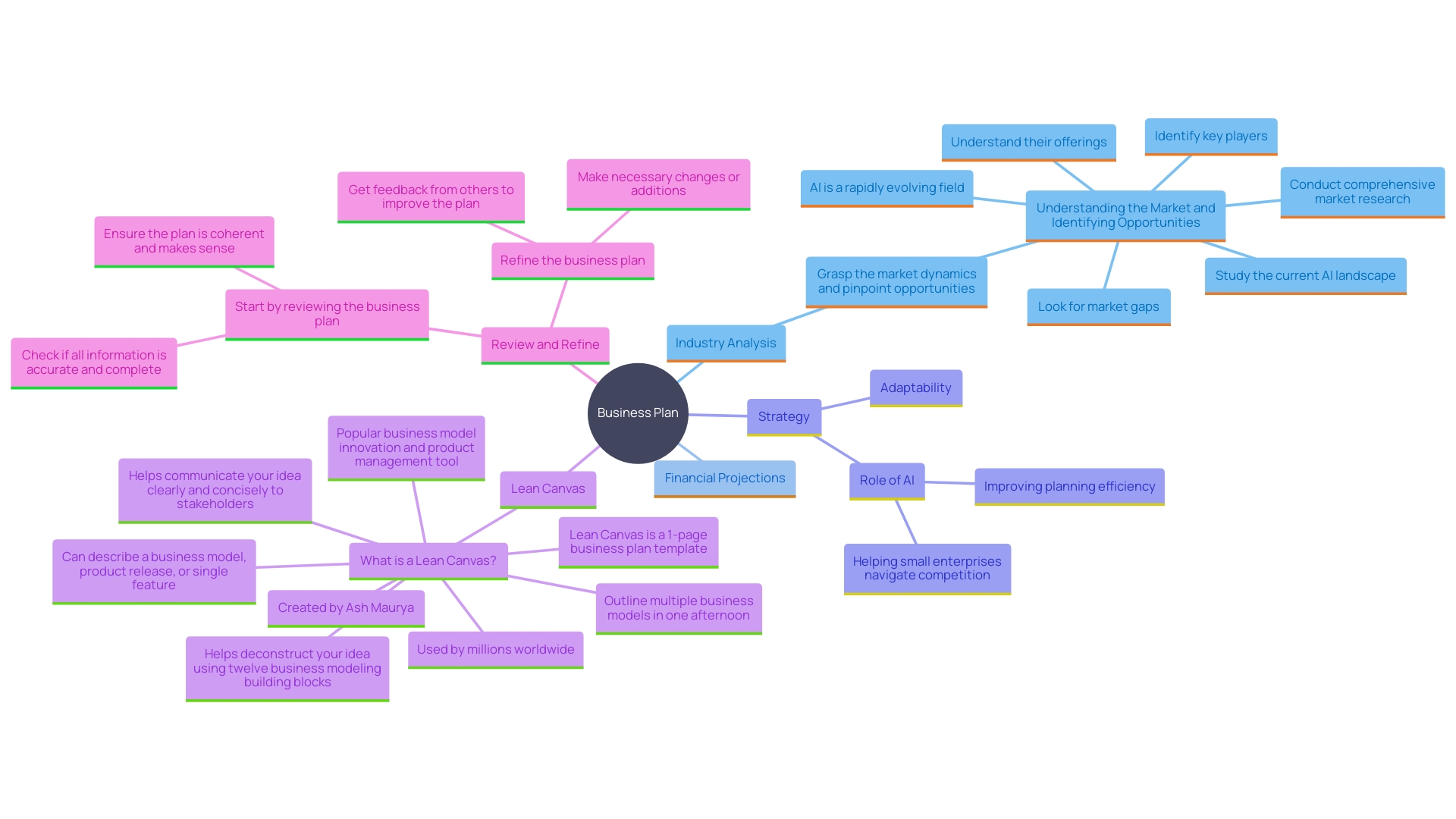
Step 5: Register Your Business
Choosing the appropriate organizational structure, like a sole proprietorship or LLC, is essential in establishing a strong base for your venture. For non-residents, forming an LLC in the United States is feasible, though it involves a more intricate process. Registering your enterprise with the appropriate authorities is mandatory to ensure legal compliance. Obtaining the necessary licenses and permits specific to your industry and location is equally important. A commercial license, for instance, is a government-issued permit that grants you the legal right to operate within a specific jurisdiction. This not only guarantees you are functioning within the law but also plays a crucial role in safeguarding your interests. Skipping this step can result in forfeiting personal liability protection, legal benefits, and tax advantages. Additionally, consider getting a Doing Business As (DBA) registration for added brand protection and legal recognition.
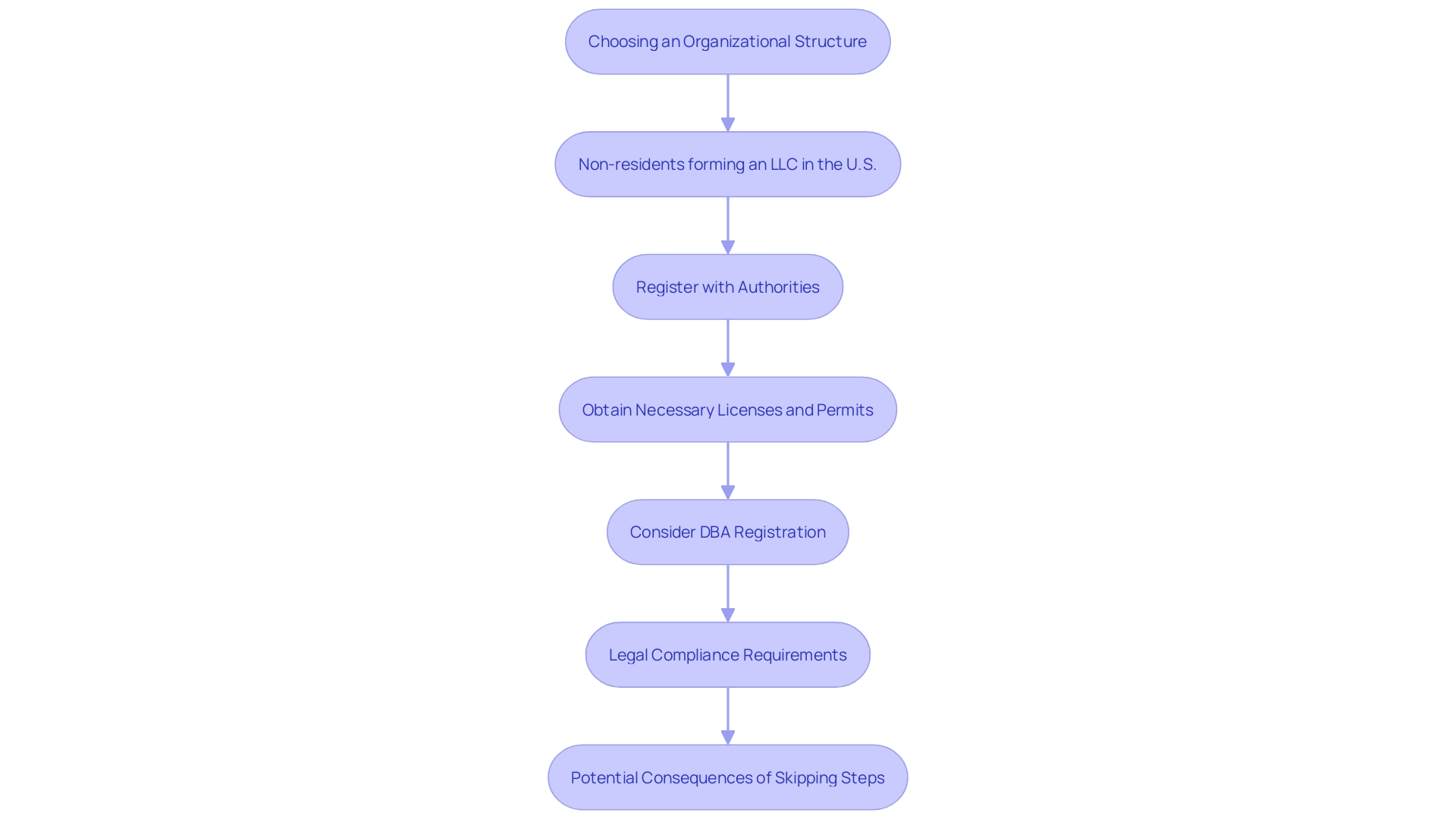
Step 6: Select an E-commerce Platform and Build Your Website
Selecting the right e-commerce platform is a crucial step in setting up a successful online retail or dropshipping business. Major platforms like Shopify, WooCommerce, and Bigcommerce offer different advantages, and your choice should align with your specific needs and goals. Shopify, for instance, is renowned for its speed, flexibility, and scalability, making it a favorite among some of the world's most trusted brands. Since its inception, Shopify has powered over half a trillion dollars in global commerce, supporting millions of merchants in more than 175 countries.
When choosing a platform, consider the user-friendly features, payment processing options, and scalability. An intuitive dashboard and ease of customization can save you time and effort. For example, while Square offers strong POS integration, its dashboard can be complex and disjointed, which may hinder operational efficiency.
Building your website involves more than just aesthetics; it requires a seamless user experience. Ensure your website has an appealing design, easy navigation, and optimized item pages. Top-notch product descriptions, images, and client reviews are crucial components that can greatly boost user trust and conversion rates.
Moreover, understanding your technical expertise and resources will help you decide between a traditional SaaS tool, a headless commerce tool, or an open-source platform. Conducting a SWOT analysis can provide deeper insights into your existing tech stack and guide you in fine-tuning your platform selection. Remember, the right choice will not only meet your current needs but also grow with your business, accommodating increasing traffic and sales volumes over time.
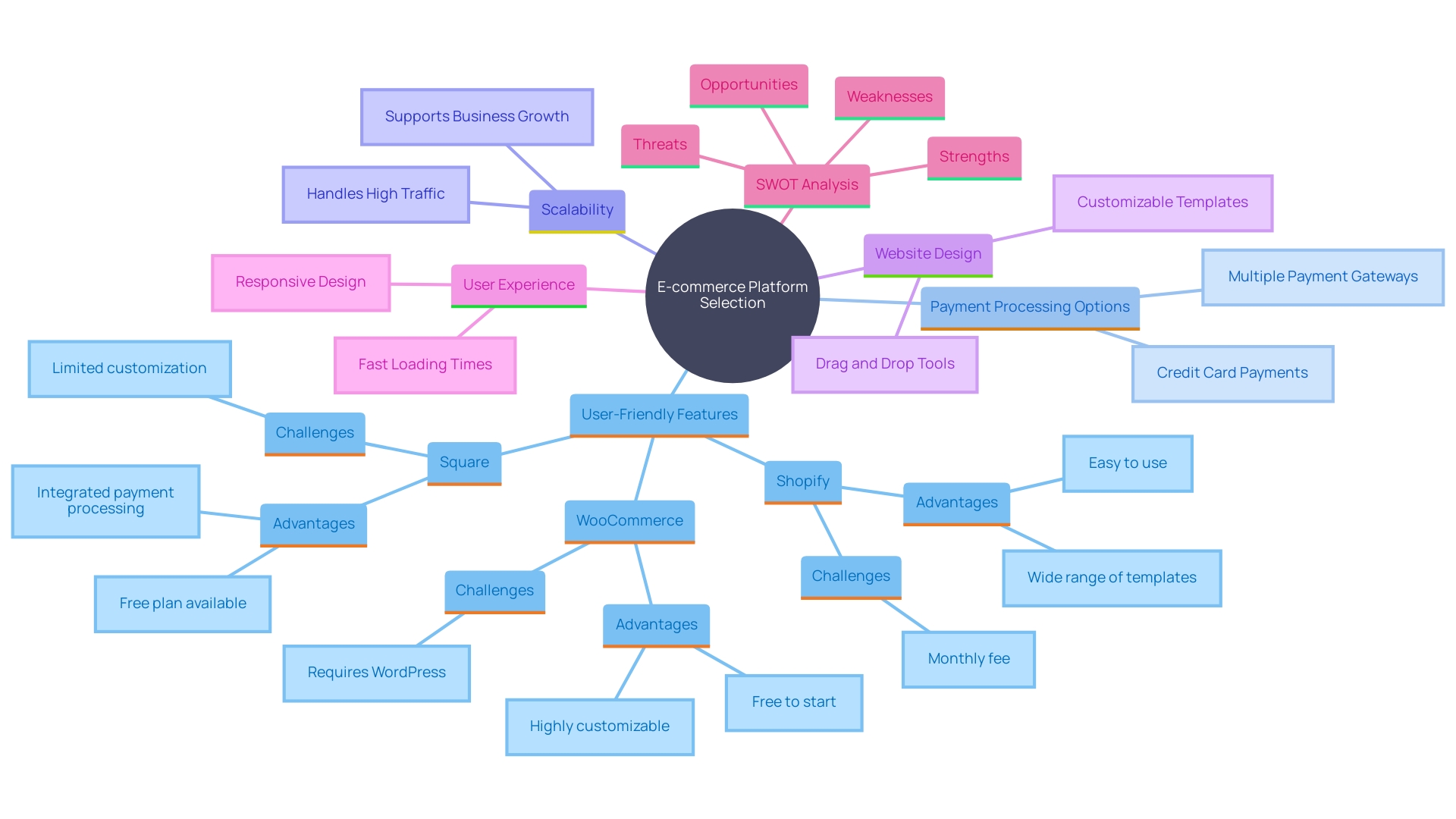
Step 7: Set Up Payment Processing and Logistics
Establishing strong payment processing systems is crucial to providing a smooth checkout experience for your clients. Payment gateways have advanced from simply authorizing transactions to offering complete solutions that improve the client experience and encourage loyalty. According to Madhav Kalyan, APAC head of Payments at J.P. Morgan, continuous investment in innovative payment solutions is transforming the future of financial services and payments.
Selecting the right logistics partners for shipping and fulfillment is another critical component. Key considerations should include shipping rates, delivery times, and return policies. For instance, the recent opening of a checkout-free store at Dublin Airport, utilizing Zippin technology, underscores the importance of efficient and reliable logistics in ensuring client satisfaction. This store allows travelers to make purchases swiftly and seamlessly, illustrating how advanced logistics can enhance the shopping experience.
Effective logistics strategies are paramount in managing inventory and fulfilling client expectations. A well-defined logistics plan ensures that products are stocked appropriately and delivered on time, which is crucial in maintaining a positive reputation and ensuring repeat transactions. The rise of eCommerce has enabled businesses to reach a global audience, making it imperative to optimize logistics to handle increased demand and diverse shipping requirements.
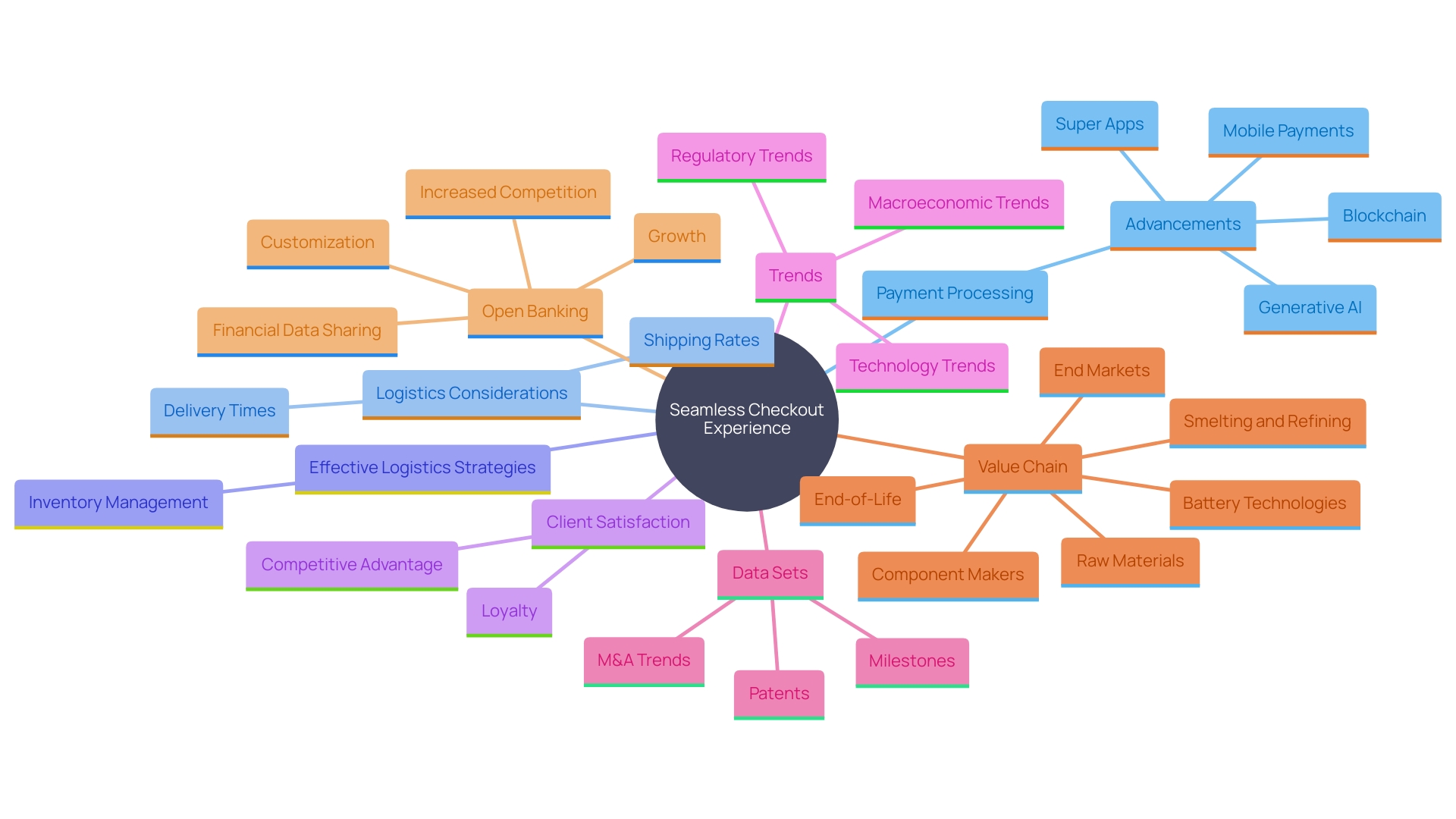
Step 8: Develop a Marketing Strategy
Developing a robust marketing strategy is essential for driving traffic to your online store and staying competitive in the fast-paced e-commerce industry. First, utilize SEO techniques to enhance your site's organic visibility. As Google dominates with over 93% of the market share, optimizing your site according to its guidelines can significantly boost your traffic by targeting the right search intent and improving user experience.
Executing pay-per-click (PPC) advertising can produce instant outcomes by positioning your ads directly in front of prospective clients. Given the current trends, AI-driven tools can optimize your ad campaigns, ensuring you reach the right audience with precision.
Leverage social media platforms to engage with your audience and build brand awareness. 'Social media not only assists in audience engagement but also helps in targeting specific demographics efficiently.'. 'With the e-commerce sector valued at $6.9 trillion, the potential for reaching a broader audience through these platforms is immense.'.
Email marketing continues to be a strong method for nurturing leads and keeping clients. By focusing on acquisition, promotion, and marketing automation, you can create personalized journeys that resonate with your audience. Testing various strategies is crucial, as every brand and consumer interaction is unique. This approach ensures that your email campaigns are effective and yield better conversion rates.
To stay ahead, continuously innovate and adapt to the evolving technological landscape. By integrating these strategies, you can enhance your online store's performance and secure a competitive edge in the dynamic e-commerce industry.
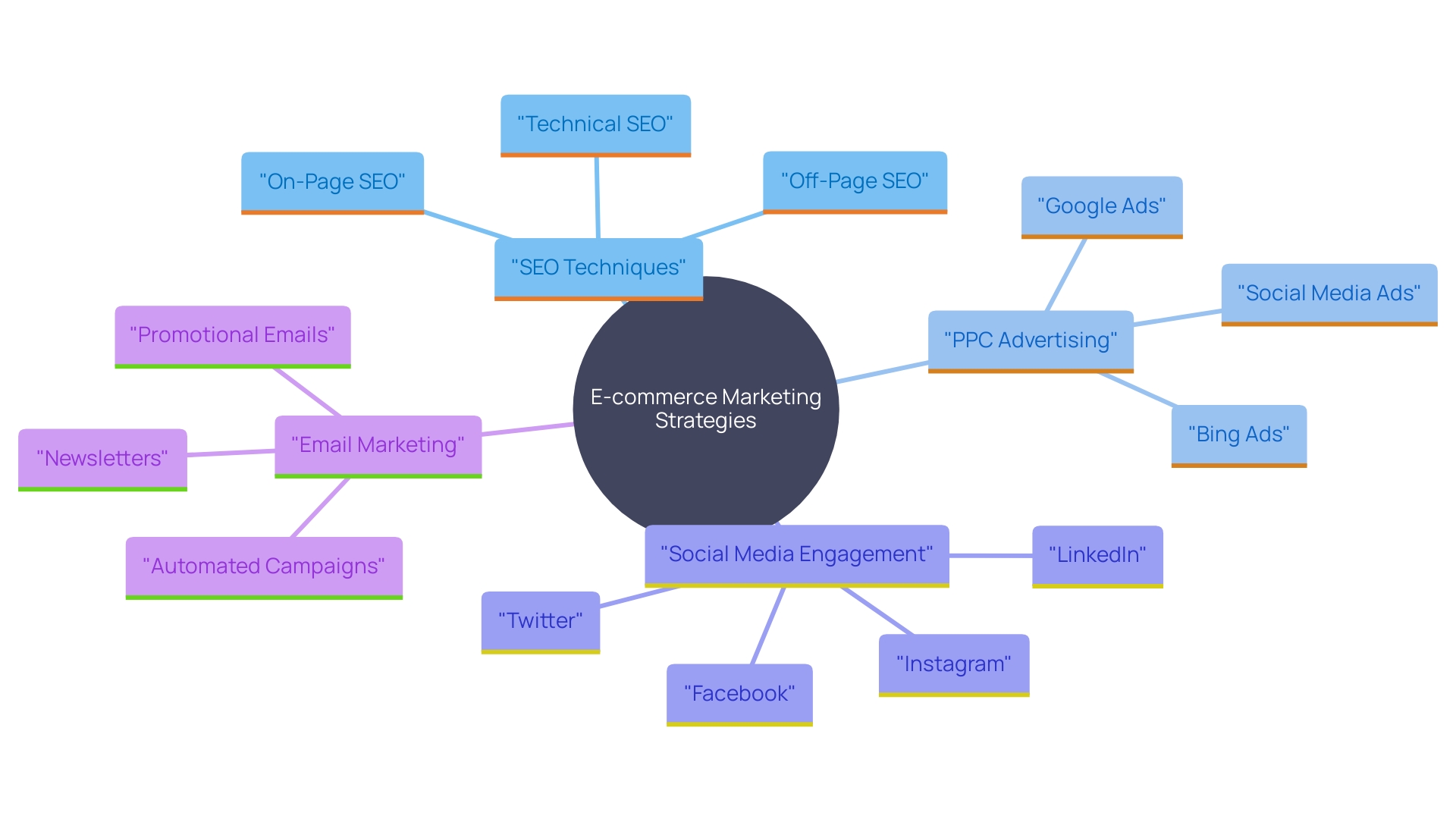
Step 9: Launch and Optimize Your Store
Once your online retail store is launched, it's crucial to monitor analytics meticulously. Assess performance metrics, user behavior, and sales trends to identify areas of improvement. Customer feedback is essential; use it to make necessary adjustments that enhance the user experience. Ongoing enhancement, fueled by data insights, marketing effectiveness, and client preferences, is essential. The e-commerce market is highly competitive and rapidly evolving. Embrace innovative approaches to increase sales and enhance client loyalty. The rise of e-commerce has enabled enterprises to reach customers worldwide, making it imperative to adapt to ongoing technological developments. According to recent statistics, the global e-commerce market is a rapidly growing segment of the economy, encompassing a wide range of industries. Leveraging these insights can help your business stay ahead in this dynamic landscape.
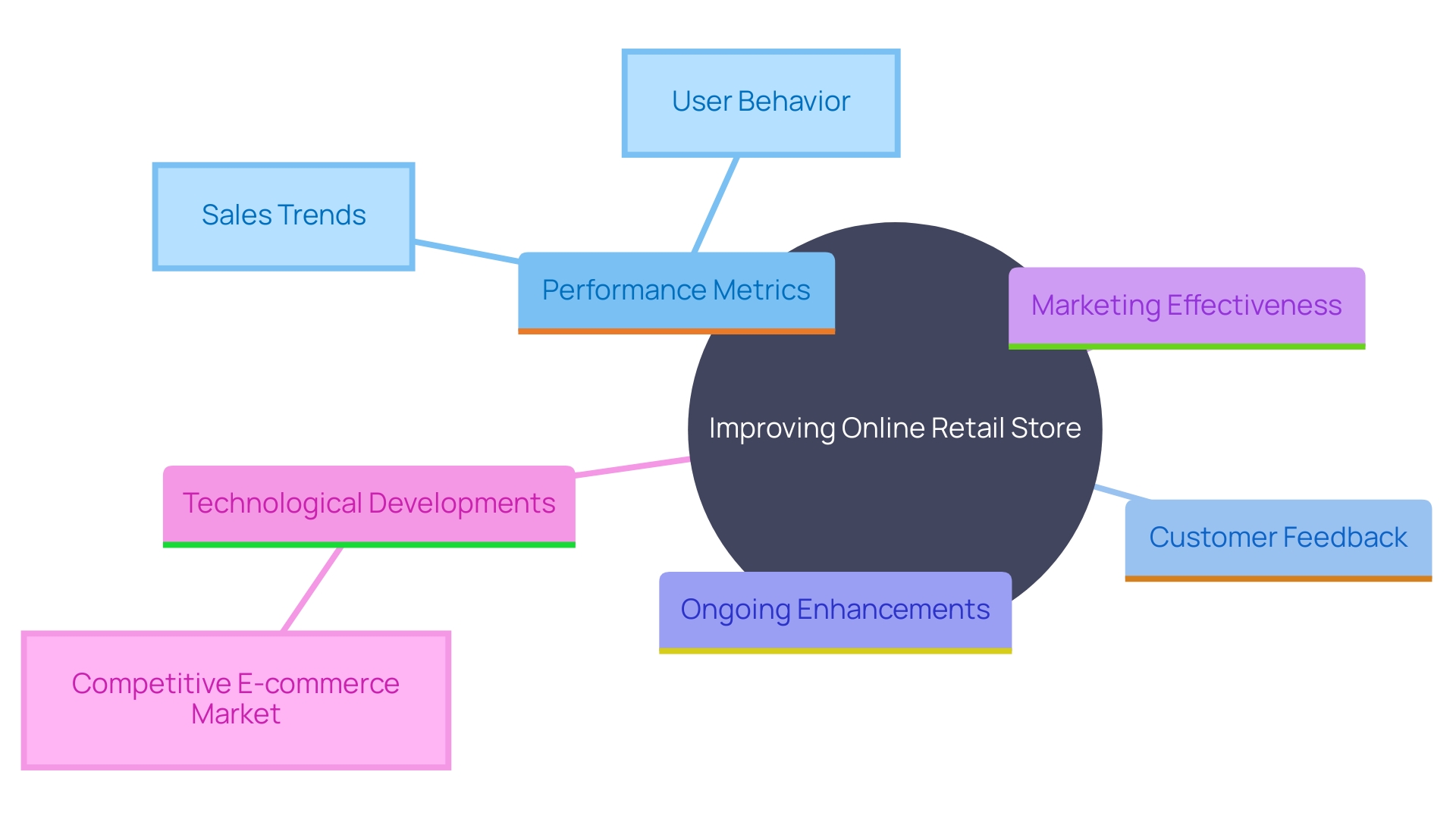
Conclusion
Establishing a successful online retail store involves a series of critical steps that collectively form a robust strategy. From defining a profitable niche and understanding the target audience to selecting the right product line, each phase is integral to laying a strong foundation. Market research plays a pivotal role in validating business ideas and ensuring alignment with customer needs, while a comprehensive business plan serves as a roadmap for future growth and operational success.
Legal compliance is another cornerstone, necessitating proper business registration and the right choice of e-commerce platform. The selection of a suitable platform influences not only the user experience but also the overall efficiency of operations. Additionally, effective payment processing systems and logistics are vital for delivering exceptional customer service, which is increasingly important in a competitive landscape.
A well-developed marketing strategy is essential for driving traffic and fostering brand awareness. By leveraging SEO, PPC, and social media, businesses can reach their target demographics effectively. Post-launch, continual optimization based on analytics and customer feedback ensures that the business evolves with market demands, allowing for sustained growth and competitiveness.
In summary, the pathway to e-commerce success is multifaceted, requiring careful planning, execution, and ongoing adaptation. By focusing on these essential elements, businesses can position themselves favorably within the expansive digital marketplace, ultimately leading to long-term success and profitability.





